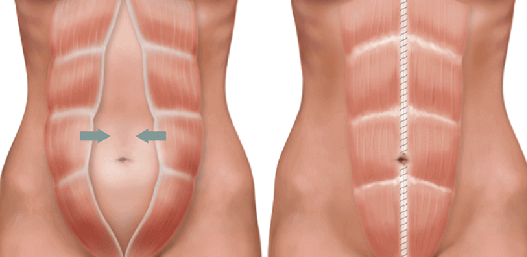How Pilates can help during the postpartum period
We’ve recently talked about how men should take up Pilates, so this month we’re focusing on women’s health issues. In this article, we focus on postpartum tummies and the simple steps you can take to get back in shape after giving birth.
Having a baby is one of the most magical experiences a woman can go through, but there are also several biological changes that occur immediately following birth which can cause anxiety, as various hormones and muscles begin to revert to a non-pregnant state. One of the symptoms of this process is known as divarication, or a separating of the abdominal muscles and ligaments, which is especially common by the time a woman has her third baby.
Easing the symptoms of divarication
Signs that your tummy muscles may have become separated following the birth of your baby include frequent bloating after meals, lower back pain, poor posture, constipation, or the appearance of being in the early stages of pregnancy due to the shape of your abdomen. Having a ‘postpartum tummy’ can add to the stresses of being a new mum, but there are several steps you can take to alleviate the symptoms over time.
In the first few days following birth, it’s really important to avoid certain movements such as sitting up straight when getting out of bed or the bath. Instead, bend your knees as you rise and use your arm to support your bodyweight. Also, when in a sitting position, remember to support your lower back with a pillow.
It’s also good to try gentle but regular exercises to re-strengthen your tummy muscles, such as pelvic floor exercises (squeezing and lifting your pelvic floor as if controlling the flow of urine); and transverse abdominal muscle exercises (taking a breath in and then drawing your front and side tummy muscles in while you breathe out).
Purge the “postpartum paunch” with Pilates
After a recommended seven weeks, and of course only after your GP has given you the all clear, a more intensive exercise such as Pilates is a fantastic way of toning your abdominal wall. Pilates is known for aiding post-injury recovery and this is no different post-pregnancy. While it’s not a quick fix and you’ll need to exercise a few times a week in order to see a difference in your abdominal contour, Pilates is an effective, safe and above all, non-surgical way of getting back into shape. So before you even consider more extreme measures, such as corrective surgery (or “body contouring”), do give Pilates a try.
Not only does Pilates focus on toning your pelvic floor and abdominal muscles, but it also helps improve your general posture, which can be comprised by holding infants, or breastfeeding, in different positions.
Pilates can also help restore confidence if you’ve been through a particularly traumatising labour, as it’s a good exercise for calming the mind, helping you to de-stress and reconnect with your body. If you’re feeling particularly isolated as a new parent, it’s also a great way of socialising with like-minded people while providing some much needed ‘me time’. It’s important not to feel guilty about taking time out, as ultimately, it will send you back home feeling revitalised and re-energised enough to look after both yourself and your baby!
If you’re unsure about which exercises are best for postnatal recovery, speak to a certified Pilates instructor as they will be qualified to advise on which exercises are safe to perform – both in class and at home – and which are not. Why not come and speak to one of the mytime team about a tailored Pilates programme that would suit your individual needs?
In Part 2 of our women’s health series, we’ll be looking at how Pilates can help during the menopause, so stay tuned for more!
Image credit: Dr David Sharp
